I have a simple 2D ray-casting routine that gets terribly slow as soon as the number of obstacles increases.
This routine is made up of:
2
forloops (outer loop iterates over each ray/direction, then inner loop iterates over each line obstacle)multiple
ifstatements (check if a value is > or < than another value or if an array is empty)
Question: How can I condense all these operations into 1 single block of vectorized instructions using Numpy ?
More specifically, I am facing 2 issues:
I have managed to vectorize the inner loop (intersection between a ray and each obstacle) but I am unable to run this operation for all rays at once.
The only workaround I found to deal with the
ifstatements is to use masked arrays. Something tells me it is not the proper way to handle these statements in this case (it seems clumsy, cumbersome and unpythonic)
Original code:
from math import radians, cos, sin
import matplotlib.pyplot as plt
import numpy as np
N = 10 # dimensions of canvas (NxN)
sides = np.array([[0, N, 0, 0], [0, N, N, N], [0, 0, 0, N], [N, N, 0, N]])
edges = np.random.rand(5, 4) * N # coordinates of 5 random segments (x1, x2, y1, y2)
edges = np.concatenate((edges, sides))
center = np.array([N/2, N/2]) # coordinates of center point
directions = np.array([(cos(radians(a)), sin(radians(a))) for a in range(0, 360, 10)]) # vectors pointing in all directions
intersections = []
# for each direction
for d in directions:
min_dist = float('inf')
# for each edge
for e in edges:
p1x, p1y = e[0], e[2]
p2x, p2y = e[1], e[3]
p3x, p3y = center
p4x, p4y = center + d
# find intersection point
den = (p1x - p2x) * (p3y - p4y) - (p1y - p2y) * (p3x - p4x)
if den:
t = ((p1x - p3x) * (p3y - p4y) - (p1y - p3y) * (p3x - p4x)) / den
u = -((p1x - p2x) * (p1y - p3y) - (p1y - p2y) * (p1x - p3x)) / den
# if any:
if t > 0 and t < 1 and u > 0:
sx = p1x + t * (p2x - p1x)
sy = p1y + t * (p2y - p1y)
isec = np.array([sx, sy])
dist = np.linalg.norm(isec-center)
# make sure to select the nearest one (from center)
if dist < min_dist:
min_dist = dist
nearest = isec
# store nearest interesection point for each ray
intersections.append(nearest)
# Render
plt.axis('off')
for x, y in zip(edges[:,:2], edges[:,2:]):
plt.plot(x, y)
for isec in np.array(intersections):
plt.plot((center[0], isec[0]), (center[1], isec[1]), '--', color="#aaaaaa", linewidth=.8)
Vectorized version (attempt):
from math import radians, cos, sin
import matplotlib.pyplot as plt
from scipy import spatial
import numpy as np
N = 10 # dimensions of canvas (NxN)
sides = np.array([[0, N, 0, 0], [0, N, N, N], [0, 0, 0, N], [N, N, 0, N]])
edges = np.random.rand(5, 4) * N # coordinates of 5 random segments (x1, x2, y1, y2)
edges = np.concatenate((edges, sides))
center = np.array([N/2, N/2]) # coordinates of center point
directions = np.array([(cos(radians(a)), sin(radians(a))) for a in range(0, 360, 10)]) # vectors pointing in all directions
intersections = []
# Render edges
plt.axis('off')
for x, y in zip(edges[:,:2], edges[:,2:]):
plt.plot(x, y)
# for each direction
for d in directions:
p1x, p1y = edges[:,0], edges[:,2]
p2x, p2y = edges[:,1], edges[:,3]
p3x, p3y = center
p4x, p4y = center + d
# denominator
den = (p1x - p2x) * (p3y - p4y) - (p1y - p2y) * (p3x - p4x)
# first 'if' statement -> if den > 0
mask = den > 0
den = den[mask]
p1x = p1x[mask]
p1y = p1y[mask]
p2x = p2x[mask]
p2y = p2y[mask]
t = ((p1x - p3x) * (p3y - p4y) - (p1y - p3y) * (p3x - p4x)) / den
u = -((p1x - p2x) * (p1y - p3y) - (p1y - p2y) * (p1x - p3x)) / den
# second 'if' statement -> if (t>0) & (t<1) & (u>0)
mask2 = (t > 0) & (t < 1) & (u > 0)
t = t[mask2]
p1x = p1x[mask2]
p1y = p1y[mask2]
p2x = p2x[mask2]
p2y = p2y[mask2]
# x, y coordinates of all intersection points in the current direction
sx = p1x + t * (p2x - p1x)
sy = p1y + t * (p2y - p1y)
pts = np.c_[sx, sy]
# if any:
if pts.size > 0:
# find nearest intersection point
tree = spatial.KDTree(pts)
nearest = pts[tree.query(center)[1]]
# Render
plt.plot((center[0], nearest[0]), (center[1], nearest[1]), '--', color="#aaaaaa", linewidth=.8)

